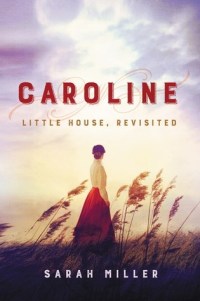 In Caroline: Little House, Revisited, Sarah Miller retells the story of Little House on the Prairie through the eyes of Ma Ingalls.
In Caroline: Little House, Revisited, Sarah Miller retells the story of Little House on the Prairie through the eyes of Ma Ingalls.
There’s so much lush and rich detail in this novel! And there are layers to that amount of detail beyond set dressing and atmosphere: Caroline’s world, like the world of so many women, was all bound up in the physical realities of her home and the hard work she did to feed and clothe her family. The amount of time spent on the little details and movements really puts you into this time and place, and the struggles of a woman on the frontier in the 1870’s.
At first I thought there wasn’t enough introspection, but as the novel went on I realized that Caroline was the type of woman who felt she didn’t need or have time for that kind of thing. There are small moments, here and there, and it ends up being more than enough and incredibly insightful.
The story follows Little House on the Prairie more or less beat for beat, with some background filled in here and there. This story is about when the Ingalls family left Wisconsin to stake a claim in Indian Territory. Pa, Ma, Mary, and Laura (who was only three at the time and would be the one to grow up to write the Little House books) set off in a covered wagon for Kansas, and then try to set up their claim. The pace is much slower and a lot more character-focused than Little House on the Prairie, which makes sense, as we’re getting this story from the adult perspective rather than a child’s.
I appreciated learning more about what Caroline Ingalls’ early life was like, and how the poverty and want of those years really affected her. She has a serious issue with “selfishness”–she thinks of herself as incredibly selfish, for some reason, and always takes care to correct her daughters when she feels they aren’t being self-sacrificing enough. It’s a trait that shows up in Laura Ingalls Wilder’s books a lot, and here you wonder why Caroline is like this. Was it her childhood that made her that way? Or just one of those things? Either way, it makes her feel three-dimensional.
As a kid, when I read the Little House books, I always found Ma way too strict and on the mean side. But as an adult, I understand her a lot better. Miller’s take on this woman, both from real-life sources and the character Laura created in her books, feels true. She comes across as a fully-fleshed person, with desires and flaws and full awareness of her powerful role as Ma.
If you have fond memories of the Little House books, love frontier narratives, or both, do give this a look!
–Marie
